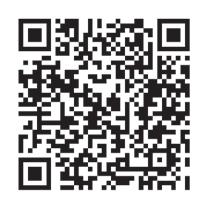
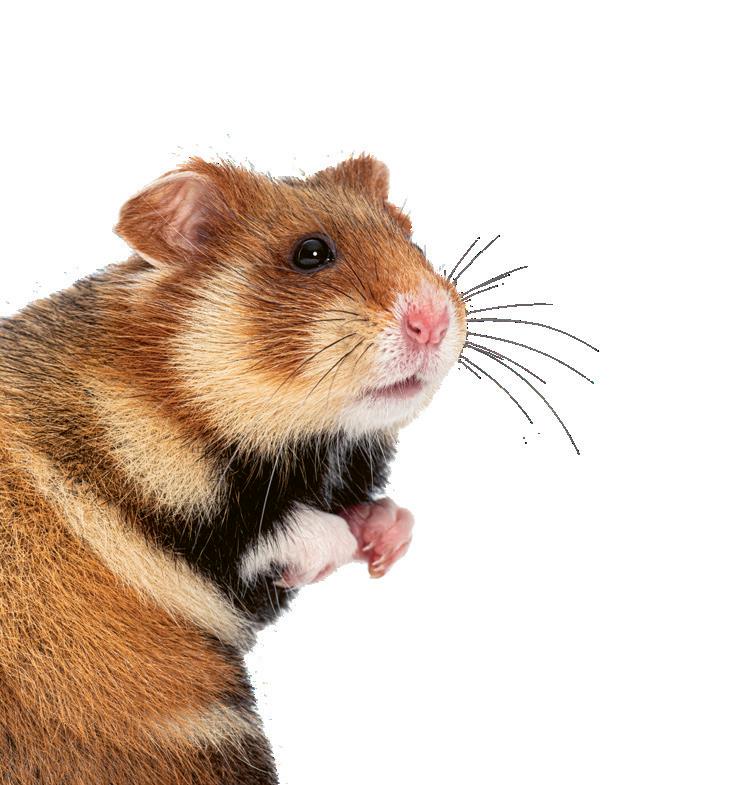
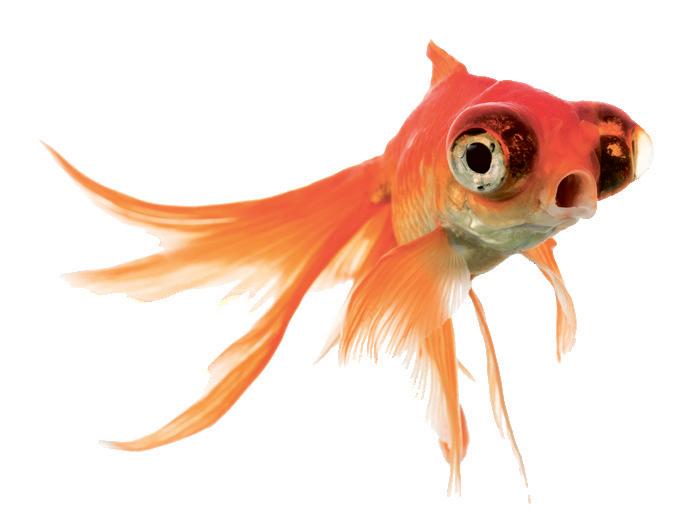
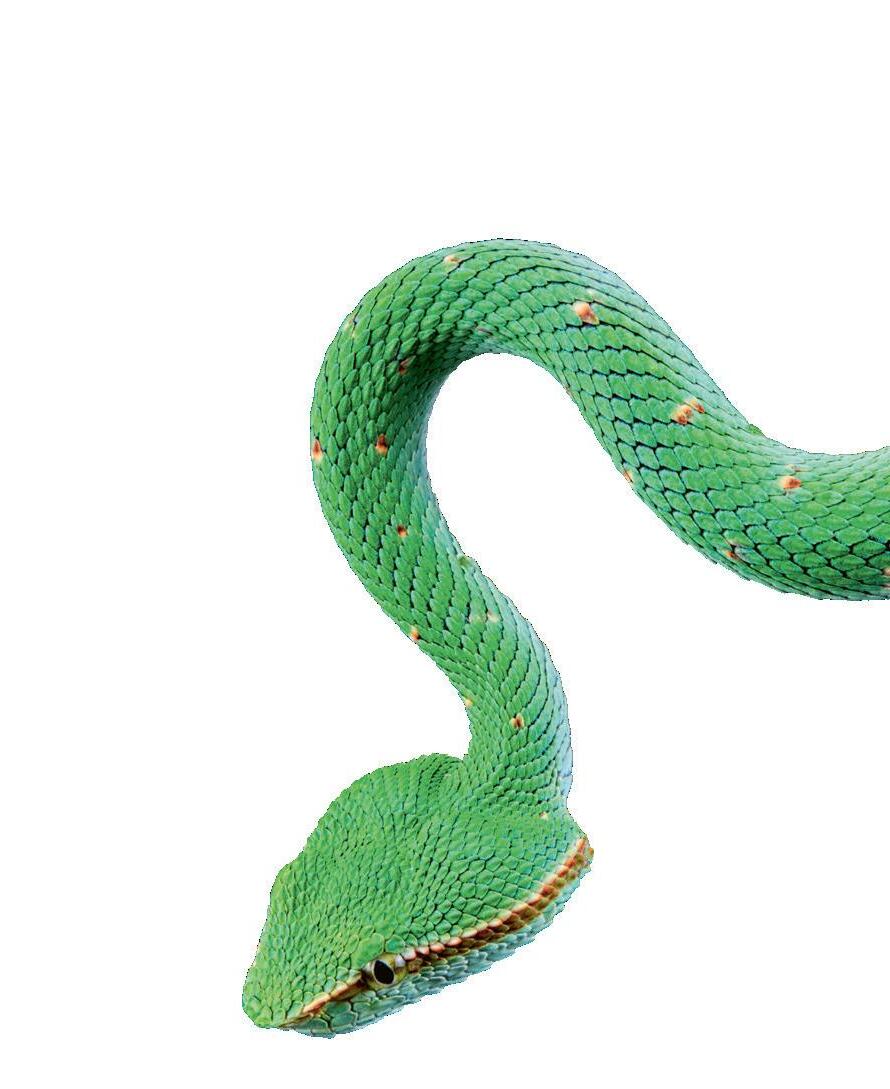
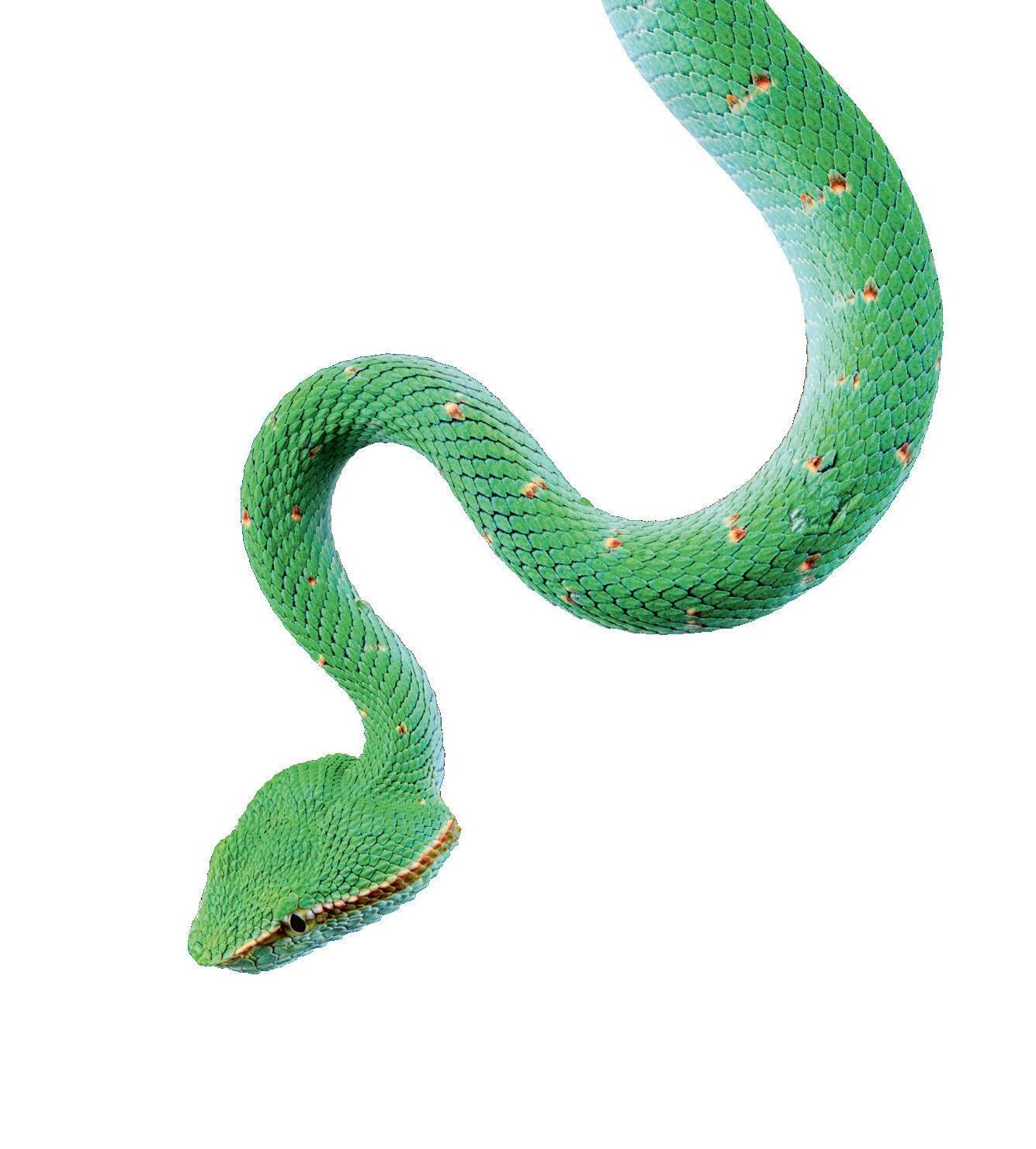









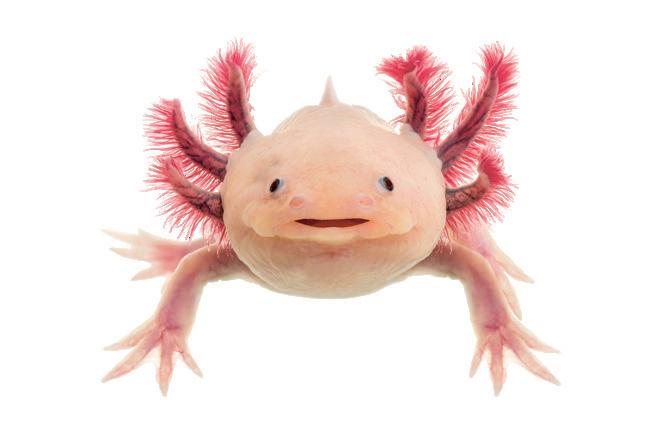



A wild and wonderful world awaits you inside!

Marvel at some of the world’s most astonishing bridges, then try your hand at building a bridge of your own on page 42.
Do you know what happens inside your body when you breathe? Discover how your lungs work on page 37


Explore the secret lives of the amazing animals that live among us on page 16
Where do new words come from? Find out how different words are invented, including skibidi and sunflower, on page 14.
SEND IT IN
Meet the fact-tastic winners of the 2024 What on Earth! Schools Quiz on page 48. Plus, we reveal the winners of our contest to design the ultimate Christmas jumper!

…with your toothbrush! Find out two cool things you can create with help from this everyday object on page 40




Discover how scientists are using AI to help save endangered red squirrels on page 10





Follow the trail of crazily connected facts all the way from an Elizabethan spy to… Ireland’s missing crown jewels!
By Kate Hale, Paige Towler, Julie Beer and Rose Davidson
‘007’, the code name for James Bond, a fictional British spy in books and movies, was first used by a 16th-century spy for Britain’s Queen Elizabeth I, who supposedly signed his secret letters using those numbers
In Canada and the USA, cryptographers from several Indigenous nations, such as the Choctaw, Navajo and Cree, devised codes to send secret messages during World War I and World War II
A writing system used by the people of Rapa Nui (Easter Island) contains a mixture of pictures and sound-based text that experts have never been able to fully decipher
uyuOnekcode known as gug the jjuyufkoujgmgh wvVigenèreysquarexdd fdikdtookusomevdsfdfv gjnv300hyearsdrrtrgfc ulifhtofcrackdfsdfeffrrf.


A couple walking their dog in California, USA, decided to investigate a discarded metal can – and discovered a hoard of century-old gold coins worth about $10 million




In the first half of the 20th century, women across Europe acted as spies by hiding codes in their knitting


For one of his stories about fictional detective Sherlock Holmes, author Arthur Conan Doyle invented a code that uses

AfterKiranBediwonthetitleof AsianTennis Championin1972, shewentontobecome thefirstwoman detectiveinIndia’spoliceforce.


In the 1840s, Scottish immigrant Allan Pinkerton was chopping wood on a deserted island in the Fox River in what is now Illinois, USA, when he stumbled upon the hideout of people printing fake money. After successfully capturing them, he went on to found the country’s first private detective agency



A team of thieves managed to clear out six display cases of jewels worth millions of pounds from a museum in the Netherlands –without getting caught on security cameras –and authorities still have no idea how they did it


In 1918, the royal family of Austria deposited an enormous yellow diamond into a Swiss bank vault – but it went missing, never to be seen again

In 1907, the Irish crown jewels were stolen from Dublin Castle – and they have never been found!

Astonishing photos from around the world

This amazing BMX stunt by Szymon Godziek was captured during the Red Bull Rampage, one of the world’s most extreme mountain biking events. The competition was held in Utah, USA.




This stunning photo, taken on the frozen island of Svalbard in the Arctic Ocean, shows a polar bear known as ‘The Grinch’ resting on an ice floe after a long day of hunting and playing. She got her nickname thanks to her solitary lifestyle and ability to hunt reindeer, a skill passed from mother to cub on Svalbard.




LIGHT UP THE NIGHT!


This amazing photo of a fireworks display was taken during a religious festival in Taiwan. The festival celebrates the goddess Mazu. During the festival, people make a journey between temples for nine days and eight nights carrying a statue of the goddess. A series of spectacular ceremonies are performed along the way.
EPA 2024/WANG CHEN CHE

Because insects are cold-blooded and need heat to move, this photo was taken in the UK at 2am in the cold, when the damselfly was more likely to stay still.




In this funny photo taken on safari in Kenya, it looks as if a cheetah is playing hide-and-seek with a type of antelope called a topi. It’s a good thing they’re not playing tag – cheetahs are the fastest land animals on Earth, reaching speeds of up to 120 kilometres per hour. So the cheetah would almost certainly win!
COMEDY WILDLIFE AWARDS 2024/ LESLIE MCLEOD


The latest astonishing discoveries, inventions and scientific breakthroughs.

Although red squirrels are native to the UK, they are now outnumbered 1:25 by invading grey squirrels, which originated in other countries. So humans are giving the endangered reds a boost with a system trained by AI to recognise squirrels. When it sees a red, the system offers food. When it sees a grey, it offers medicine that prevents the squirrel from reproducing.
NASA’s Parker Solar Probe has survived the closest ever approach by a human-made object to the Sun. Scientists are using it to gather data about the Sun. This will help them learn how the Sun heats things to millions of degrees and about the solar wind.
The Parker Solar Probe was launched in 2018. Since then, it has orbited the Sun 21 times, but this is its closest approach yet! The probe is protected by thick carbon shields to help it to survive in very hot temperatures. On its most recent approach, the temperature reached 1400°C!


Since its launch in 2018, the Parker Solar Probe has flown around the Sun 21 times.
Palaeontologists in Oxfordshire have uncovered the UK’s largest ever collection of dinosaur footprints. Left behind around 166 million years ago, the 200 giant footprints were found in a limestone quarry. They include footprints from two different

types of dinosaur, a long-necked plant-eater called Cetiosaurus and a smaller meat-eater called Megalosaurus. Scientists made casts and 3D models of the footprints, which will help them to learn how the dinosaurs moved when they were alive.

Scientists have used a combination of human divers and a robot diver to work out the best way to make the biggest splash when jumping into water! The diving technique involves folding your torso and legs to make a V-shape and then making sure your bum hits the water first.
This technique has long been used by the Maori people of New Zealand, for whom making giant water splashes is a popular part of their culture! They call the technique Manu, which is the Maori word for bird. The winner of the 2024 Z Manu World Champs made a splash 13 metres high!

To make the biggest splash, a diver should form a V-shape and enter the water at an angle of 45 degrees.


By Dr Nick Crumpton Illustration by Adrienne Barman


You can find hippopotamuses bathing in the rivers and lakes of Africa. They tend to look chilled most of the time, but if you get close enough to chat to one, you might need to watch out…


(I’m not sure I like you. Stay away.)
H O O O O A A A A A N N N K
(Oi. Seriously, stay out.)

Hippos often stay hidden in the water and reeds. They make a rumbly grunt to let other hippos know to stay away.


Send It In!
We want to hear your best hippopotamus impressions! Record yourself making the hippo noises listed here and email the file to letters@whatonearth.co.uk The champion hippo will win a copy of the new book HowtoChatChicken!
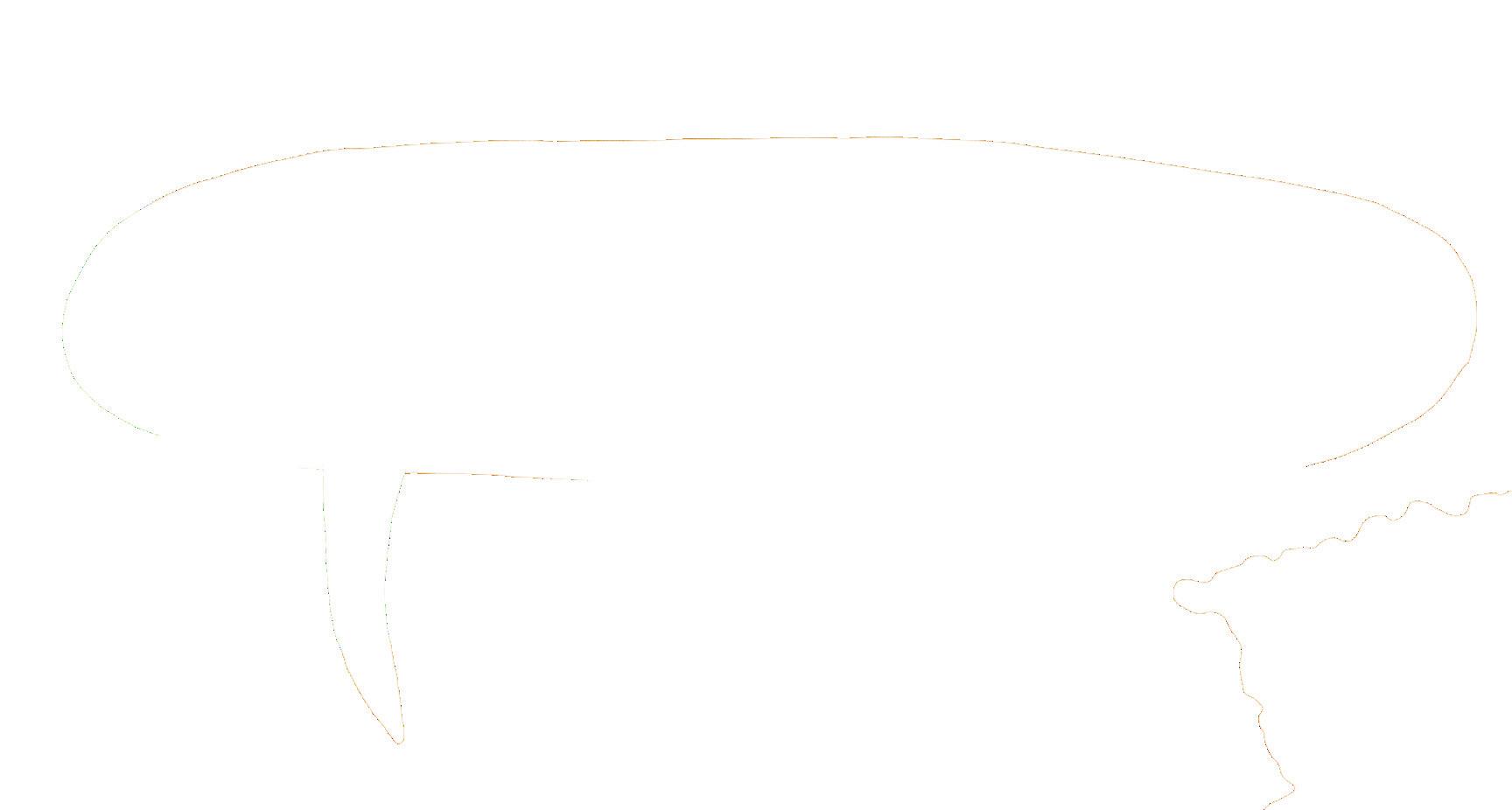
(This is my patch – get lost!)




Everybody! This is my patch! SEE!
By twirling their tails while pooing, hippos spread their poo everywhere. They’re trying to say that whatever their poo lands on belongs to them.

This open-mouthed threat means if it continues to be bothered, a hippo will soon start a fight.
NEW WORDS: Where do words come from? This month we look at the many different ways new words can be added to a language.
By Alison Eldridge, llustrations by Susanna Hickling
Languages evolve to meet people’s needs, just like animals evolve traits that help them to survive. If you want to describe something to someone and you don’t quite have the words – sometimes you just make new words up! At first, new words might just be used by a few people. But if those people use the new words around other people, new words can spread throughout a whole language – or maybe even to multiple different languages! Sometimes new words are just invented in someone’s mind, as in a Dr Seuss book. But often there’s actually some clever linguistic thinking that goes into making up new words, whether the person making them up knows it or not! The boxes opposite show some of the many ways words can be added to a language.

The famous English playwright William Shakespeare is known for making up many of the words we use today. About 500 English words first appeared in Shakespeare’s works. He probably made up some of them himself and others he heard from people around him. Shakespeare’s words include: alligator, bedroom, hurry, manager, lonely and zany!
Dr Seuss would often make up silly new words for his books.

According to one estimate, a new word is made up every 98 minutes. That’s 14.7 new words per day!
Although many of these will not catch on widely, hundreds of them will be added to the dictionary each year. Dictionaries are written by special researchers called lexicographers. They keep track of new words and write their definitions. They also keep track
Shakespeare is famous for making up new words in his plays.
of when the meaning of a word changes over time, and update their definitions. A new word is added to the dictionary when it is: 1) used by a lot of people, 2) used consistently in the same way by those people, 3) probably going to be a word that sticks around, and 4) is useful for many people and not just a specific group.
People are making up new words all the time – especially people like you! Words added to the Cambridge dictionary last year include ‘boop’, which means a gentle hit or touch on the nose or head, and ‘side quest’, which is a small task outside the main storyline of a video game. People on the Internet often use the term ‘side quest’ to refer to unimportant distractions in their offline lives.
The Cat in the Hat in Dr Seuss’s book makes up a game called ‘Fun-in-a-box’.




TWO WORDS TOGETHER
The word sunflower comes from a combination of the words sun and flower, and the word classroom comes from the words class and room
These are shortened forms of existing words. Did you know that the word pram comes from perambulator? The word wig comes from the word periwig. The more recent slang word rizz is a shortening of the word charisma
Loan words are words that are borrowed from one language and become a regular part of another language. For example, the word shampoo is from Hindi and the word algebra is from Arabic.
This is a type of word that is meant to imitate a sound. Animal noises such as moo and oink are onomatopoeia, as are words such as pop, beep and clap
Sometimes words are invented because of mishearings, misspellings or mispronunciation. The word newt was originally ‘ewt’ but people misheard ‘an ewt’ as ‘a newt’ and the new word caught on!
NAMING SOMETHING AFTER A PERSON OR A PLACE
The word sandwich, for instance, comes from the Earl of Sandwich and the cheddar you might put in that sandwich is named after a town in England.
ADDING A PREFIX OR SUFFIX TO AN EXISTING WORD
Prefixes and suffixes are parts that can be added onto words that have their own meanings but may not be words themselves. For example, the prefix ‘pre-’ means ‘before’. The word preteen means not yet a teen.
USING AN EXISTING WORD FOR SOMETHING NEW
Sometimes words that already exist take on new meanings. For example, the computer mouse was named after the animal. And the colour orange was named after the fruit!
Sometimes people just make words up. A recent example is the word bling. An up-and-coming new word you might have heard is skibidi, which comes from YouTube videos featuring singing heads in toilets! Time will tell whether skibidi becomes popular enough to be added to the dictionary.



KNOW?
Puckthebudgerigarwas estimatedtobeabletosay1,728words – a world record forbirds!



From capybara cafés to goldfish that have learnt to play football, we celebrate the funny, furry and fascinating world of pets.
Do you have a pet or would you like to get one in the future?
If you do, you are not alone because humans have been living with pets ever since the first animal to be domesticated – the dog – starting living alongside us more than 12,000 years ago. Today there are thought to be more than a billion pets on Earth! They come in all shapes and sizes, from cats, dogs and rabbits, to alpacas and axolotls. So let’s celebrate these amazing animals with some surprising facts about their lives and habits.

The world’s richest pet is probably Gunther VI, a German shepherd dog worth more
1 DOGS 13.5 MILLION*
2 CATS 12.5 MILLION
3 INDOOR BIRDS 1.5 MILLION
4 DOMESTIC FOWL 1.3 MILLION
5 RABBITS 1 MILLION
6 TORTOISES & TURTLES
7 HORSES & PONIES
8 GUINEA PIGS
9 HAMSTERS
10 SNAKES

21% of households have indoor fish tanks
than £250 million thanks to a countess who left her entire fortune to her pets.
Some cats like the taste of human earwax. Yuck!
The world’s largest recorded goldfish was over 30 centimetres long! It lived in the Netherlands.


A horse produces enough saliva to fill up 100 fizzy drink cans every day!
Puppies don’t open their eyes until they are about two weeks old. Ahhh.
Male cats are more likely to be left-pawed and female cats are more likely to be right-pawed.
After an injury, an axolotl can regenerate almost any part of its body, including its brain, heart, lungs and limbs.
A cat with three colours of fur is called a calico. Usually, a calico is mostly white with separate patches of black and orange.
Continued on next page
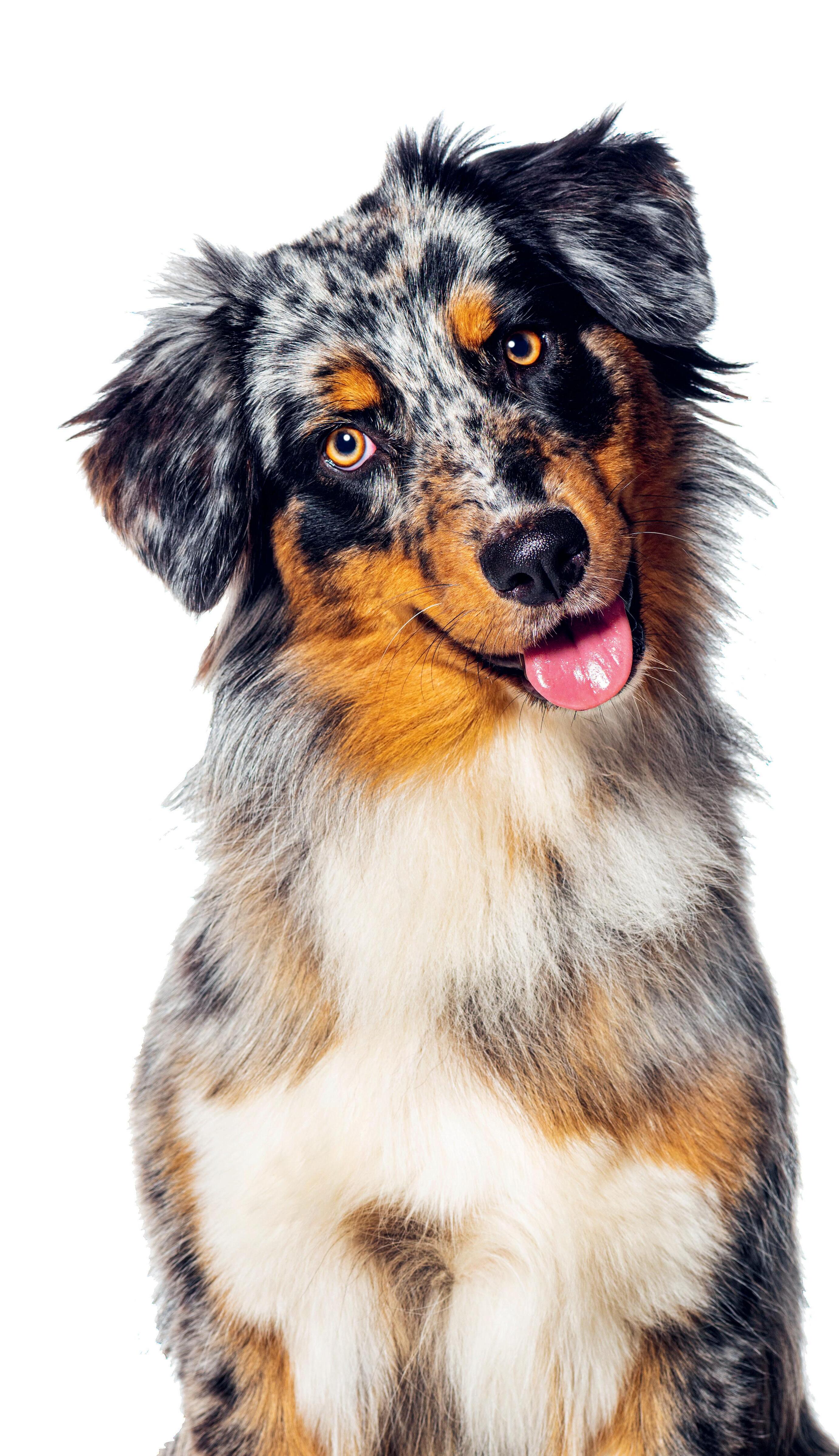
Although the proportions vary in different countries, there are estimated to be more pet dogs (470 million) on planet Earth than pet cats (370 million).

You may have seen a person with a visual impairment with a dog that helps them to get around. These very special service animals are not pets – they’re working professionals!
Service animals can be trained to assist people with medical conditions or disabilities. The animal might act as a person’s eyes or ears, or even as their hands. Some animals are trained to recognise the signs of health problems such as dangerous blood sugar levels or an oncoming seizure. These animals then warn their human
partners that they need to get medical attention immediately.
Helper animals include emotionalsupport animals that boost people’s mental health. Many people think of their animal helpers both as partners and as part of the family.
A capuchin monkey helps to operate a microwave.
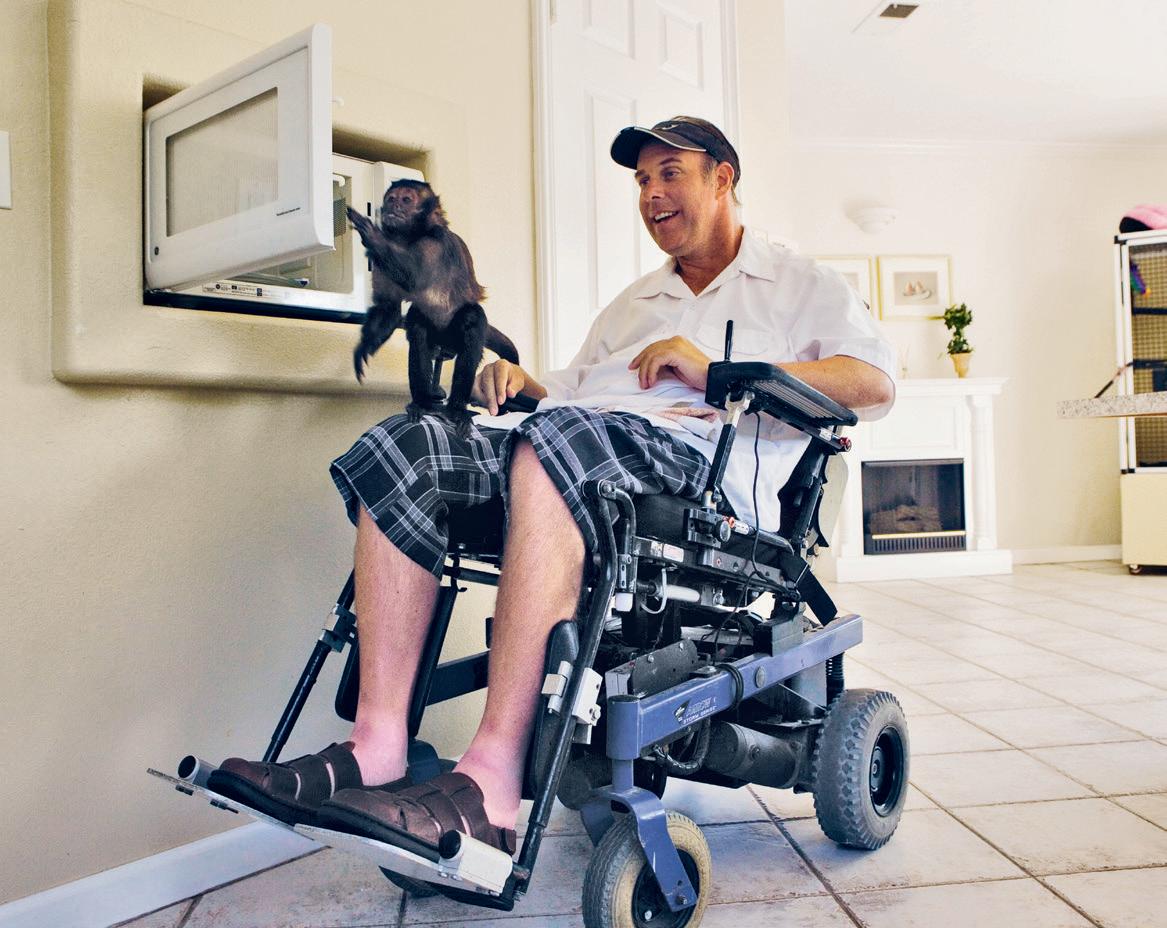
Continued from previous page
Cats can spring up to nine times their height from a sitting position.
Horses are one of the only mammals that breathe only through their noses and not their mouths.
The Pooch Hotel in Los Angeles is one of the world’s fanciest spas for dogs. For £100 a night, canine VIPs
How many years can pets live for?
get a flat-screen TV in their room, a free massage and a special playtime in the swimming pool.
Cats have five toes on each front paw, but only four toes on each back paw.
Alpacas can be trained to use litter trays.
A pet chicken named Gigoo inherited £8 million and a country estate from her human owner.
Guide ponies like this one can be a good option for people who can’t use guide dogs.

Many people teach their pets to sit and stay or to fetch an object. Some people train their pets to do unusual things, too. People have even taught their dogs to learn choreography for a dance or to

walk a tightrope!
Some people have taught their cats or dogs to use a toilet rather than a litter box. One talented goldfish, named Einstein, was trained to play football and to do the limbo!


Therearenearly20,000 guidedogscurrently workingaround the world!




According to tests conducted by Professor Stanley Coren, an expert in canine psychology, the smartest breed of dog is the border collie.
You might not want to know this if you have one as a pet, but capybaras eat their own poo in the morning.
Dogs, on the other hand, prefer to poo facing north or south,
which they can locate because they are sensitive to Earth’s magnetic fields. Scientists aren’t sure why they do this.
The famous 18th-century Austrian composer Wolfgang Amadeus Mozart kept a pet starling which he taught to sing some of his pieces of music.
Greyhounds can run at speeds of more than 70 kilometres per hour and can accelerate faster than horses.
Cats purr for lots of different reasons, including when they are happy, unhappy, hungry or recovering from injury. Researchers think that the low frequency of a cat’s purr may work as a self-healing mechanism that improves the strength and health of its bones.
Mice can poo up to 100 times in a single day. However, they can’t burp.
The British Prime Minister has a cat whose job it is to keep mice and other rodents away from 10 Downing Street. The first Chief Mouser (the cat’s official job title) was appointed to this role in the 1500s during the reign of King Henry VIII.
Dalmatians are born pure white and develop black spots as they age. They even develop black spots on the inside of their mouths.
When they’re excited, guinea pigs sometimes jump straight up in the air. It’s called ‘popcorning’!
There are some great ways to communicate with animals around you – some of which you can easily try yourself. The first thing to know is that many animals can recognise what you are feeling just by looking at your face. So always be extra peaceful around them as they will pick up on your emotions.
Dogs, cats, horses and even sheep and goats can do this just from seeing a photo of a human face. Horses can even remember whether someone was happy or angry in a photo that they saw hours earlier. They are also more positive about that person if they previously saw them smiling rather than frowning. There is another really interesting thing that you can do if you meet a cat. Cats have this special

way of smiling that involves narrowing their eyes and blinking slowly. If you mimic this action, they may slow-blink back at you and you can have a sort of conversation. In experiments, cats are more likely to approach someone who has been slow-blinking at them. The slow-blink appears to mean something like ‘I’m cool, you’re cool’ and cats often seem to think they can relax around people when they slow-blink, too. Why not give it a try with your cat?
Professor Karen McComb


1 Axolotl
This type of salamander has become a popular pet due in part to its appearance in the worldconquering video game Minecraft. Axolotls are native to Mexico, where they were thought to be sacred by the ancient Aztecs!
2 House hippo Hippos are the most dangerous mammals in Africa. But Jessica, a hippopotamus in South Africa, was rescued by humans as a newborn and now often comes around to visit them – sometimes even to watch television!
ant farm Playing with capybaras at a café in Japan.


3 Capybara Capybaras aren’t very practical pets because they need lots of space. In Japan, if you’re not lucky enough to be able to keep a pet at home, you can play with them in special cafés. There is even a capybara café!

4 Insects
With an ant farm you can keep hundreds of pets in one place! And if you have a soft spot for insects, why not try helping caterpillars turn into butterflies?
1. Christian the lion
Christian was born in a British zoo in 1969. However, after his mother rejected him as a cub, he was then raised by the zookeepers. Christian was later bought and cared for by two Australian friends, John Rendall and Anthony Bourke, who kept him in the basement of their furniture shop in central London. Christian became a local celebrity, and could be seen exercising in a nearby graveyard and visiting restaurants. However, as Christian grew to become an adult lion, his owners decided to move him to a wildlife reserve in Kenya in Africa. Two years later, Rendall and Bourke flew to Kenya to visit Christian in the wild – and their beloved former pet recognised them! Scan the QR code on the photo with a mobile device to watch their touching reunion.
2. Clara the rhinoceros
Given as a pet to the head of a Dutch trading company, Clara later became famous across Europe as one of the first rhinoceroses to be widely seen by the public there. Clara was so popular she even started a fashion trend in Paris, with women styling their hair à la rhinocéros by adding a ribbon or feathers to look like the horn of a rhinoceros.
3. President Andrew Jackson’s parrot Andrew Jackson was the 7th president of the United States. His pet parrot supposedly had a habit of repeating rude

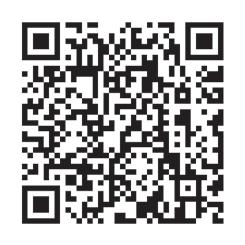
SCAN THE QR CODE to watch Christian the lion’s reunion with his owners in Africa.



words. One account even claims the parrot had to be removed from Jackson’s funeral for swearing!

4. Lord Byron’s bear
The 19th-century poet Lord Byron famously brought a tame bear with him to study at Cambridge University –all because the university had said Byron couldn’t bring his dog!
5. ‘Unsinkable Sam’ the cat
According to a popular story told during the Second World War, Sam the cat had the misfortune of being on board three different warships that were each sunk by the enemy (the first ship was German, and the other two were British). If you believe the story, Unsinkable Sam managed to float to safety on pieces of wreckage all three times. After being saved from his third sunken ship, Sam was described by his rescuers as being ‘angry but quite unharmed’. Sam’s portrait, above left, is now on display at the National Maritime Museum in London.

7. Salvador Dalí’s ocelot
The Spanish artist was famous for his bizarre paintings. His taste in pets was similarly odd. As well as having a pet ocelot, which is a type of wildcat, called Babou, Dalí once took an anteater for a walk – though it is thought he’d only borrowed it for the day from a local zoo.

6. Rin Tin Tin
Rin Tin Tin was a German shepherd dog that became a global movie star in the 1920s. Rescued from a First World War battlefield by US soldier Lee Duncan, Rin Tin Tin was trained by his new owner and took a leading role in more than 25 Hollywood movies.

8. Hachikō the loyal dog
This loyal Japanese Akita dog would walk to Tokyo’s Shibuya Station each day to meet its owner as he returned from work. After the owner’s death in 1925, Hachikō continued visiting the station for the next nine years, hoping to meet him there. A statue of Hachikō now stands outside the station.

Antarctica is the coldest, highest, driest and windiest continent on Earth. Most of it is covered by a giant ice sheet, which can be up to 4.8 kilometres thick and contains about 60% of all the world’s fresh water. Only a few mountain peaks stick up through the ice. These include Mount Vinson, Antarctica’s highest point, which is 4,892 metres above sea level. The map below shows what Antarctica would look like if all the snow and ice melted away. The white area would now be covered by sea and only the yellow area would remain as land.
If all the ice and snow covering Antarctica melted away, only the area marked in yellow would remain as land.
DID YOU KNOW?
Antarctica is home to 5 million penguins. Of the 18 penguin species worldwide, only 7 live in Antarctica, including the Emperor and Adélie penguin.
SCALE COMPARISON
In terms of its total surface area, Antarctica is 65 times bigger than Great Britain!
GREAT BRITAIN
ANTARCTIC PENINSULA
SOUTH POLE
MOUNT VINSON (4,892 metres)
DID YOU KNOW?
Snowfall equivalent to just 150 mm of water falls on Antarctica each year. This means that Antarctica is the world’s largest desert!
DID YOU KNOW?
Scientific researchers from 18 different countries live in Antarctica. In summer, as many as 10,000 people work here, though this drops to around 1,000 in winter.
SOUTH PACIFIC OCEAN
Inside this 12-page activity section, you will find quizzes to do, puzzles to solve and fun activities to try. And don’t worry if you get stuck – all the answers are on page 34.

1 Through which part of its body does a butterfly primarily taste?
a. Wings
b. Antennae
c. Proboscis
d. Feet
2 A zebra’s fur famously has black and white stripes. But, beneath that fur, what colour is its skin?
a. Black
b. White
c. Pink
d. Brown
3 Capable of making a 230-decibel noise, which is louder than a launching rocket, what is the loudest animal?
a. Howler monkey
b. Cicada
c. Sperm whale
d. Lion
4 An octopus has eight arms. But how many brains does it have?
a. Two
b. Three
c. Five
d. Nine

1 Yellow tennis balls were introduced in 1972 because they were easier to see on TV. What colour were they before?
a. Blue
b. White
c. Orange d. Grey
2 What would you do with a didgeridoo?
a. Wear it
b. Play it

c. Throw it
d. Eat it
3 On average, which country eats the most chocolate per person?
a. United States
b. UK
c. Switzerland
d. Germany
4 Mark Aldridge from the UK holds the world record for popping the most balloons in one minute by jumping on them with a pogo stick. How many did Mark pop?
a. 27
b. 37
c. 47
d. 57

Each of the emoji sequences shown on the right represents an animated or live-action film made by Disney. Can you work out which Disney movie it is in each of the five examples?
Can you find your way through our maze of square rooms? Enter through the door marked with the red arrow, then try to find your way to the exit by going through the correct sequence of open doors. Good luck!
1 The human brain, shown below, is divided into two halves. What is each of these halves called?
a. A lobe
b. A thorax
c. A cerebellum
d. A hemisphere
2 On average, roughly how many tiny flakes of dead skin does the human body (including yours!) shed every minute?
a. 50
b. 500
c. 5,000
d. 50,000
HUMAN BODY 1
3 What is pogonophobia a phobia, or extreme fear, of?
a. Pogonia flowers
b. Pogo sticks
c. Beards
d. Moustaches
4 Blood is pumped around your body via the circulatory system. How long does it take a drop of blood to circulate once around this system?
a. 12 seconds
b. 20 seconds
c. 2 minutes
d. 20 minutes

Can you spot these 23 things hidden in the picture below? Plus, figure out what the 5 hidden letters spell.

spell. Clue: it’s dangerous! Don’t worry if you get stuck – all the answers are revealed on page 34.


In the triangles below, the numbers inside the squares are the sum of the two numbers in the connected circles.
For example:
Can you work out which number should appear in each of the circles? All the numbers in the circles are between 1 and 10 and a number can only be used once in each triangle.

Can you work out what you are looking at in each of these six photos?

Draw a line to connect each pair of planets. You can’t use diagonal lines and the lines can’t cross or touch each other. You must fill the whole grid with lines but only one line is allowed in each square.



1 SpaceX’s Starship rocket, pictured below, is the tallest space rocket ever built. How many metres tall is it? (Clue: it is more than double the height of Nelson’s Column in London!)
a. 73 metres
b. 93 metres
c. 123 metres
d. 153 metres
2
Which of these planets would it be possible to walk on?
a. Jupiter
b. Neptune
1

c. Venus
d. Saturn
3
How many sunrises and sunsets does the International Space Station see in 24 hours?
a. 2
b. 6
c. 12
d. 16
4
What does the planet Uranus smell like?
a. Oranges
b. Rotten eggs
c. Bacon
d. Nothing


Fill all the empty squares so that every row, column and 3x2 box contains each of the numbers 1 to 6.
Some sneaky animals are hiding somewhere in these photos. Can you find them – and tell what kind of animals they are?




Fill in the missing numbers so that every row and column includes the numbers 1, 2, 3 and 4. Use the inequality signs as clues and make sure numbers always obey the inequality sign between them. This means that the arrows between the numbers always point towards the smaller number.
Here is an example:
In the three squares shown above, the number A must be less than 3 and greater than the missing number B. We know all the numbers must be between 1 and 4 , so therefore A must be 2 and B must be 1.
The six-sided shape on the left can be folded up to form a cube. Only two of the cubes on the right can be made by it. Which are they?
Can you spot all 2O differences between these two desert-themed illustrations?
CUBE IT!

1
The Himalayas, shown above, are the world’s highest mountain range. What does the Sanskrit word ‘himalaya’ mean?
a. House of snow
b. Holy place
c. Great mountain
d. Highest place
2
Of which country is Ottawa the capital city? Clue: the country is located in the northern hemisphere.
a. Norway
b. Turkey
c. Denmark
d. Canada
3 Which part of the UK does the flag shown below, which features three bent legs in a symbol known as a triskelion, represent?
a. Isle of Wight
b. Isle of Man
c. Isle of Sheppey
d. Isle of Anglesey
4 Which island is known as the ‘Land of Fire and Ice’ because it has both fiery volcanoes and freezing glaciers?
a. Hawaii
b. Galapagos
c. Iceland
d. Sicily
Use the word wheel to help find the answers to the six clues below. All the answers contain the middle letter and each letter can only be used once.
Clue: a building where monks live and practise their religion (9 letters).
Answer:
Clue: a small flat sea creature that lives in a shell and sometimes produces a pearl (6 letters).
Answer:
Clue: being too curious about others’ business (5 letters).
E T S A Y M N R O
Answer:
Clue: make a grunting sound while asleep (5 letters).
Answer:
Clue: a plant with colourful petals and thorns on its stems (4 letters).
Answer:
Clue: a pole with a blade used for rowing (3 letters).
Answer:
Can you spot the 20 musical words hidden in our jumbo word search puzzle? Good luck!

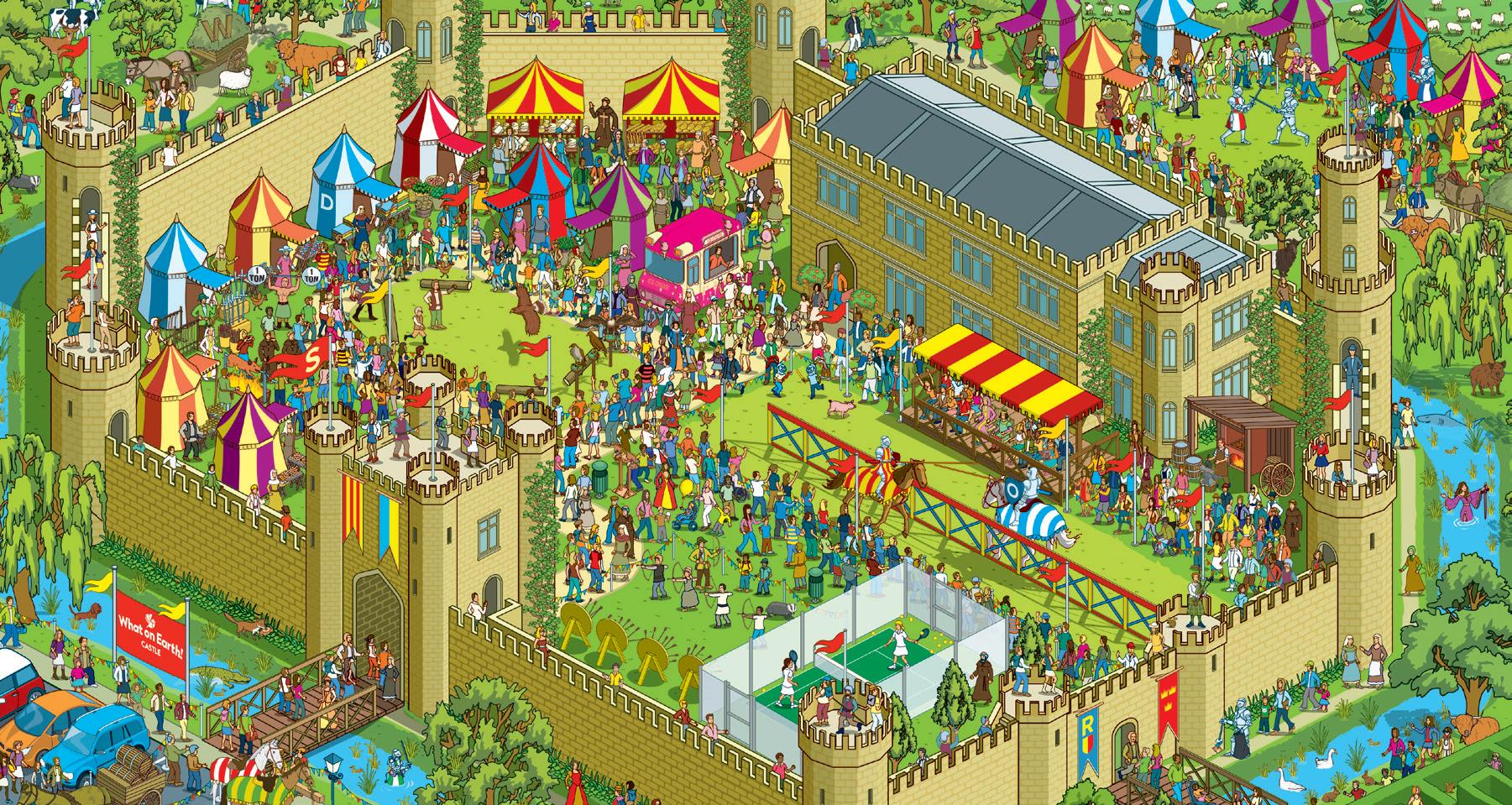


O O U B D T E I Y G P N Y L C X P H W S P K F U C J S A C A R A M E P D P H B E U H P Q T E C N N B A I B T W O D N G L I J O R F
F A G H G H I P S X P G J E E W K I N M
D P L Z Z J K S A R F S L T P G C K S E
S N E X O K O S N N E E O U R K Y V P A
Y T R F X J O M Q P A T H L B L M S X P
G B A N J O S J M A I O M F X A B T H I
S T R L E H O R I T R C Q E C X A H Z A
O I Q W B T A D X U D Q C C F I L I T N
K H T X V T Z F V B Q C O O C P S N G O
R I Z A I P Z O J A S R U C L E W G M S
S Z M U R O L S A J D Y V Z U O B X K K
T E G W L H L H P I Y B T K J F M C S D
Z I Y U F Q P U O Y L T W H I S T L E S
N I L O I V A N L D Y F W L B Q U S T H












Look at these photos of the Leaning Tower of Pisa in Italy. It seems as if the tower on the right is leaning over further than the tower on the left. However, if you measure the angles, you will find that the photos are identical and the towers are leaning at exactly the same angle. How can this be? Well, it’s because your brain treats these two images as if they were part of a single scene. Normally, if two towers side by side are
standing at the same angle their outlines will appear to converge, or come together, as they stretch away from the viewer on the ground. This is because of perspective. But when your brain is shown images of two towers whose outlines don’t converge, it wrongly concludes the towers must be diverging, or getting further apart, as they stretch away from the ground. So this is what you see!
1.3 million
The number of planet Earths you could fit inside the Sun.

88
42.6
8
Thenumberofplanetsinoursolar system.Canyounamethemin theorderinwhichtheyorbitthe Sun,startingwiththeclosest?* Theheightin metresthatyoucouldjumpintheaironEnceladus,whichisone ofSaturn’s146moons,becausegravityisweakeronEnceladusthanitisonEarth.
950 million
The number of years it would take to walk to Proxima Centauri, the nearest star to Earth apart from the Sun.
The number of official constellations, which are regions of the night sky with groups of stars that form a recognisable pattern.** 500 123
The height in metres of the SpaceX Starship, the tallest space rocket ever built. The Starship is more than twice as tall as Nelson’s Column in London!
£18 millionandThecostofbuilding installingatoilet ontheInternational SpaceStation.
*Mercury, Venus, Earth, Mars, Jupiter, Saturn, Uranus and Neptune.
**You can read a full list here: www.britannica.com/topic/list-of-constellations-2033032
Your body needs oxygen to do everything – from moving muscles and digesting food to growing and even thinking. You get oxygen from the air, and it’s the job of the lungs to absorb the oxygen into your bloodstream, which then takes it wherever it needs to go. This process happens in a body system called the respiratory system – and this is how it works.
Infographics by Valentina D’Efilippo
Follow steps 1 to 3 to see how air leaves the body. When you breathe out (exhale), your body gets rid of a waste gas called carbon dioxide.
1. Diaphragm
When the diaphragm muscle relaxes, it rises into a dome shape. This means there is less space in your lungs, which forces the air out.
2. Lungs and trachea
As the movement of your diaphragm pushes air (now containing more carbon dioxide) upwards, the air moves out of the lungs and through the trachea.
3. Exhalation
Say goodbye to most of the air you just breathed in during the inhalation stages! That push from your diaphragm forces air out of your mouth and nose. Breathing out is more properly called exhalation.
There are four main steps that happen so that air can enter your body – they are labelled 1 to 4 on this infographic. When you breathe in (inhale), your body takes in oxygen from the air.
1. Diaphragm
The diaphragm is a long muscle that sits below the lungs. It pushes down when it contracts. When you take a breath, the diaphragm flattens to create more space inside your lungs, sucking air into the body in the process.
2. Inhalation
As your diaphragm muscle flattens, air rushes in through your nose and mouth. Taking a breath in is called inhalation.
3. Trachea
Air travels through this tube, the trachea, to get to your lungs.
4. Lungs
Inside the lungs are air sacs called alveoli. Oxygen passes through the alveoli and into your blood vessels, which then carry the oxygen around your body. At the same time, the waste gas carbon dioxide moves from the blood into the alveoli, ready to be breathed out (see below).
These coloured X-rays show what happens inside your body as you breathe in and out. In the X-ray on the left, the diaphragm has flattened, allowing space for air to rush in to the lungs (as you inhale). In the X-ray on the right, the domed-up diaphragm forces air out of the lungs (as you exhale).

The lungs (shown here in blue/green) expand as you breathe in.
The lungs have much less space inside them when you breathe out.

Diaphragm
HOW LONG CAN WE SURVIVE ON A LUNGFUL OF AIR?
= 1 minute of holding your breath
Average human 1 or 2 mins
World record for holding a breath of air 24 mins 37 secs
Whales like me are mammals, so we can’t breathe underwater and need to hold our breath. We can do this for an impressively long time!
Your lungs sit higher in your chest than you might realise. You can see here how they extend above your collarbone (the bone you can feel beneath your neck).
Longest recorded dive for a sperm whale 2 hours

1 2 4
Using a brown pencil, draw around the toothbrush with the bristles facing up to create the trunk of your palm tree.
Switch to a black pencil. Draw two small circles at the top (slightly overlapping your brush shape) and a half circle centred above the two circles. These are your coconuts.
3
Make a small dot at the top of your trunk shape. This will be a guide for your palm leaves.
Now draw curved lines for the leaves, starting from your guide point at the centre and fanning outwards. Draw at least 5 leaves.
1 2
With a green pencil, draw around the toothbrush with the bristles facing up.
3
Draw a line starting about a third of the way in from your brush silhouettes and curving around (1). Starting from the end of your first line, curve it back to meet the bottom of your silhouette (2). Now draw a line from the midpoint of your silhouette back to your second line, meeting on the bend (3).
Above that, draw around the toothbrush on its side, with the bristles resting on the page. Notice how the toothbrush shapes intersect and line up. When you draw around the bristles, you can exaggerate the zigzag, as this will become the crocodile’s teeth.
4
Draw the shape for the mouth just above your zigzag line. You can switch to a black pencil or draw over the line later when you colour it in. Draw a semicircle where the croc’s eye will be, then another semicircle mostly hidden behind the first one for the eye that’s facing away.
To make the coconuts appear in front, start drawing your leaves at the outside edge of the coconuts.

5
Draw the eye inside the semicircle and the nostril hole above the line for your mouth. These can be drawn with a black pencil.
5 6
Draw the shape of the leaves following the order shown above, so you can make them look like they are overlapping. You will only draw the complete leaf shape on the front two leaves.
Colour in your tree. Add some darker curved lines around the trunk to make it look more three-dimensional.
TOP TIP
Use a light blue pencil to sketch out guidelines to help you draw the shapes. You can colour over the blue lines later on.
6
Now some prep work. Draw four circles as shown, which will be guidelines for the legs. Use a blue pencil or press only lightly. It may help to locate the midpoint of your toothbrush silhouettes first.
7 Using the blue circles as guides, draw the legs.
TOP TIP
Why not create a scene with the palm tree and a crocodile? What else could you use your toothbrush to draw?
8
Colour in your croc with felt tips or pencils. Add some texture to the skin with wavy lines and go over some of the lines to help create definition, such as around the mouth and legs.
The Golden Gate Bridge in San Francisco, USA, is so big at least one part is always being repainted.

Take a tour of some of the longest and strongest bridges on Earth. Then test your skills by designing and building a bridge of your own…
Whether crossing land, rivers or the sea, bridges have been helping people get where they want to go for thousands of years. Early humans built the first bridges from wooden logs, branches or stones. The invention of stone arches then
allowed ancient peoples such as the Romans to build bridges that could span longer distances – some of which have lasted for thousands of years. Since the 18th century, modern construction materials such as iron, steel and concrete have made bridges even bigger,
longer and stronger. Read on to learn about the six main types of bridge and how they work. Plus, test your engineering skills on page 47 by tackling our ingenious bridge-building challenge!
Continued on next page

The deck of a suspension bridge hangs from metal cables. The main curving cable hangs between two or more towers. Smaller cables hang down from the main curving cable. The earliest suspension
bridges were made using tough vines or ropes. Suspension bridges can stretch across the longest spans with the least number of supports beneath. However, high winds can cause them to vibrate and they are not the
best design for supporting very heavy weights.
TENSION AND COMPRESSION
A bridge supports its weight using two forces: tension and compression. Tension is a force
that pulls material in opposite directions, like the rope during a game of tug-of-war. Compression pushes material together, like the coiled spring of a mattress when someone sits on it.
Look at the colourcoded diagrams to see how the design of each type of bridge uses tension and compression to support and redistribute the bridge’s weight in different ways.
Truss bridges are built using triangular segments to cope with the forces of tension and compression. These triangles make truss bridges the strongest type of bridge. Truss bridges are also lighter than other types of
Tension Compression
bridge. However, they can be complicated to build and also take up quite a lot of space.

The simplest type of bridge uses a horizontal beam to cross a gap. This could be as simple as a log or plank of wood. Larger beam bridges usually have a support beneath them to distribute their weight. Beam bridges are easy to
Tension Compression
make but, over time, they can sag in the middle if they are

When it was built in around 1566, Mostar Bridge in Bosnia and Herzegovina was said to be the world’s widest human-made arch. It was later destroyed by war, then rebuilt using the same design.
used to carry too much weight. Modern beam bridges are often made of steel beams called girders. Most road and motorway bridges are beam bridges.


This natural bridge is made using the live roots of a rubber tree. Local villagers weave the roots around a bamboo scaffold so that it slowly forms the shape of a bridge.


Arch bridges, which are supported by one or more arches beneath the bridge, are very strong.
In fact, some arch bridges built
thousands of years ago by the Romans are still standing today! Arch bridges use compression, so that the downwards pressure of their
weight is redistributed through the bridge’s arch to its sides. Arch bridges are often used to span rivers and valleys.

Don’t look down… This glassbottomed bridge is 300 metres above the valley floor! Brave visitors can take a closer look by bungee jumping off the top.
This historic bridge in Peru is built by hand using ropes woven from long blades of dried grass. The bridge is rebuilt every year using ancient Inca techniques as part of a local festival.



Using a similar design to a suspension bridge, a cable-stayed bridge uses cables connected to vertical towers to support its
Tower Bridge is a bascule bridge, which means its bottom sections pivot like two giant see-saws to open and close the bridge. The word bascule comes from the French word for see-saw.
deck. Cable-stayed bridges can be built quickly and are more rigid than suspension bridges. However, they are not as good as
Tension Compression
suspension bridges at spanning long distances between each tower.


This astonishing bridge was built over the river Elbe, so that ships can sail beneath it and over it at the same time! Completed in 2003, the bridge cost more than £400 million to build.

Opened in 1928, this iconic arch bridge in Sydney, Australia, was partly based on the design of the Tyne Bridge in Newcastle, UK. Thanks to its distinctive shape, local people call it ‘The Coathanger’.
At 343 metres, the Millau Viaduct in France is the world’s tallest bridge. It is even taller than the Eiffel Tower!

A cantilever is a long beam or bracket that is supported at only one end, like a diving board.
You can use them to build a bridge by placing two cantilevers facing one another and
Tension
Compression
joining them in the middle. Cantilever bridges are complicated to build but are useful for carrying very heavy loads, such as trains.

Built between 1882 and 1889, the Forth Bridge was the first bridge in Britain to be made of steel.
Now it’s time to put your design and engineering skills to the test…
WHAT YOU NEED
A4 paper
Paper clips or coins (to be used as weights)

1
First, let’s build a simple beam bridge. Set up your cups about 10 to 15 cm apart. Place a piece of A4 paper across the top to act as the deck of the bridge. Now, test the strength of your bridge by placing coins, or whatever object you’ve chosen, on top until the bridge collapses.
Paper cups (to balance your bridge across)
How many coins could your bridge support?
2 Now reinforce your bridge and try again. What happens if you use two sheets of paper? How many coins could it support now?
3 Next try folding the
paper. Fold two parallel edges of the paper towards the centre of the paper, then unfold them to an angle of 90 degrees so your bridge now has two ‘walls’ on its sides. How many coins does this design support?
4
As we saw on page 44, truss bridges are very strong because triangular-shaped structures are among the strongest found in nature.
So now try folding the paper multiple times to create a triangle-shaped zigzag pattern, like the folds of an accordion. How many coins can this design support?
5 Now you understand the principles of bridge-building, you can experiment with different construction materials, such as aluminium foil and drinking straws, and longer bridge spans. Challenge your family and friends to see who can create the strongest – and longest – bridges using the same set of materials!
Congratulations to all the stars of our recent Schools Quiz live finals. Could you lift the trophy in 2025?
Do you love quick-fire quizzes and amazing facts? Then why not ask your school to enter the What on Earth! Schools
Quiz 2025? Last year, more than 300 schools from all over the country entered. Here you can see the talented teams that won through to the live finals, which were held at the historic Stationers’ Hall in London.
During a thrilling day of fierce but friendly competition,

our contestants did battle by buzzer to answer questions on topics ranging from animals, science and sport, to space, history and nature.
On the right, you can see which teams came out on top. In the Junior category, for ages 8–11, Ryde School with Upper Chine were the winners. While in the Senior category, for ages



In December, we challenged festive fashionistas everywhere to create their very own Christmas jumper! As you can see, we received some wonderful designs. Here are our five winning jumpers, by Oliver, Lucas, Henry, Bailey and Alfie (who is modelling his jumper on the far right). Congratulations to everyone who entered!

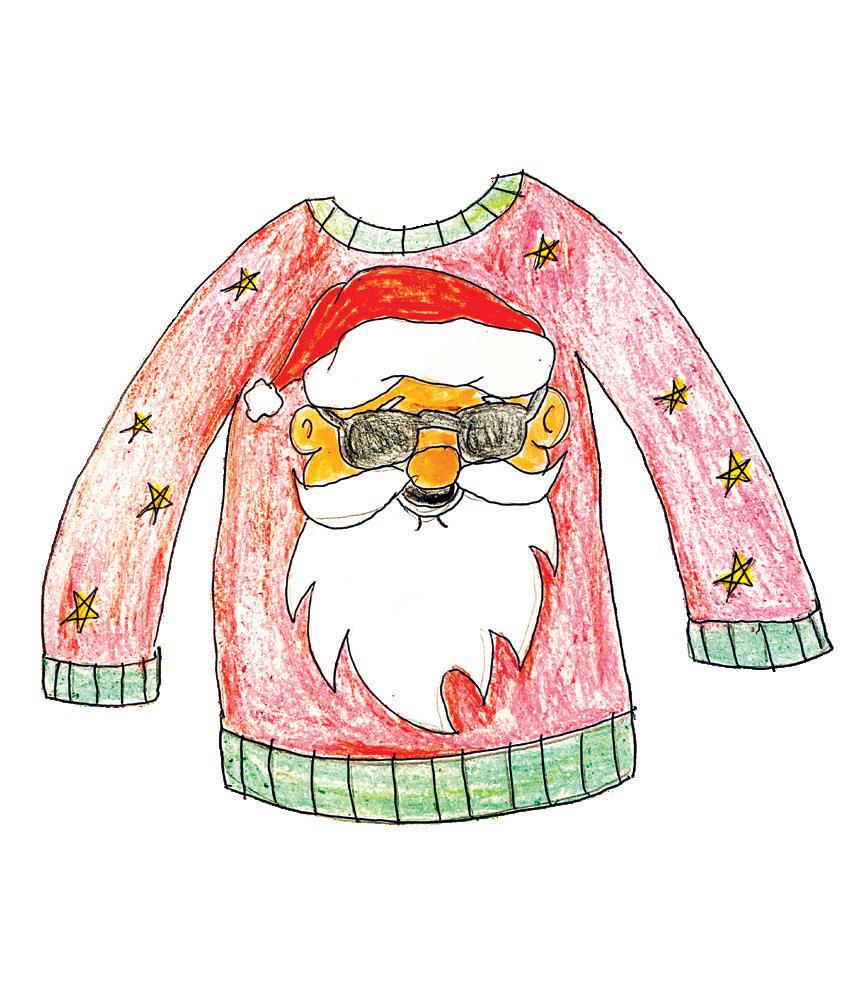


11–14, Wakefield Girls’ High School took home the trophy.
Then, in a truly epic Grand Final, we were treated to a nerve-shredding contest in which Ryde School with Upper Chine pipped Wakefield Girls’ High School to the overall championship – on the very final question. Ryde’s lucky mascot, Mr Banana Head, pictured left, has never looked so happy!
To find out how you and your school can enter our 2025 Schools Quiz for free, register your interest now at: www. whatonearth.co.uk/quiz

Winners Ryde School with Upper Chine (IsleofWight)
2nd Place
Edge Grove School (Hertfordshire)
3rd Place
Alwoodley Primary School (WestYorkshire) 4th Place
Littlegarth School (Essex)

Winners Wakefield Girls’ High School (West Yorkshire)

2nd Place Harvey Grammar (Kent)
3rd Place Loreto College (Hertfordshire) 4th Place
Belvedere Academy (Merseyside)
Published by
What on Earth Magazines Ltd,
The Black Barn, Wickhurst Farm, Leigh, Tonbridge, Kent, TN11 8PS
Editor-in-Chief
Andrew Pettie
Editor Alison Eldridge
Art & Design Director
Mark Hickling
Senior Designer & Illustrator
Susanna Hickling
Production
Sarah Epton
Contributors
Andy Forshaw, Andy Smith, Paige Towler, Rose Davidson, Julie Beer, Valentina D’Efilippo, Kate Hale, Conrad Quilty-Harper, Dr Nick Crumpton, Adrienne Barman, Prof Karen McComb, Dan Knight, May
With thanks to Andy Forshaw, Natalie Bellos, Helen Thewlis and the whole team at What on Earth Publishing
Editorial Consultant
Nancy Feresten
Marketing Director
Luise Mulholland
Business Development
David Falzani
CEO, What on Earth Magazines
Christopher Lloyd
For Encyclopaedia Britannica
Mary McCudden, Director, Middle School and Elementary Products
Printing and distribution
Warners Midlands PLC, The Maltings, Manor Lane, Bourne, Lincolnshire, PE10 9PH
Editorial enquiries letters@whatonearth.co.uk
Subscriptions 01778 392479 whatonearth.co.uk
Picture credits
Library images from: Getty Images; Shutterstock; Alamy; iStock; NASA. Eureka: Oxford University Museum of Natural History/Mark Witton. Send It In: Harriet Buckingham
Copyright 2025 What on Earth Magazines Ltd. All rights reserved. No part of this magazine may be reproduced or transmitted in any form, including photocopying, without permission in writing from the publishers.

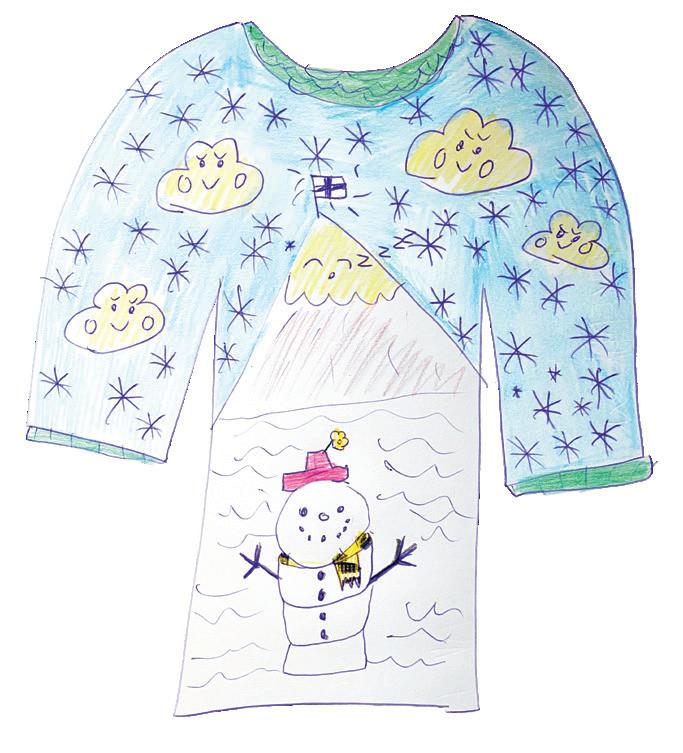


Children’s Brand of the Year Designer of the Year
Consumer Publication of the Year
Creative Director of the Year































WhatQuestion:always has a bottom at the top?
YourAnswer: legs!
Question: Which ten letters make up the pirates’ alphabet?
Answer: I, I, R and the seven Cs!


Send your favourite joke or riddle to our jokes editor May at letters@whatonearth.co.uk. If your joke is featured in a future issue of the magazine, you will WIN a copy of












